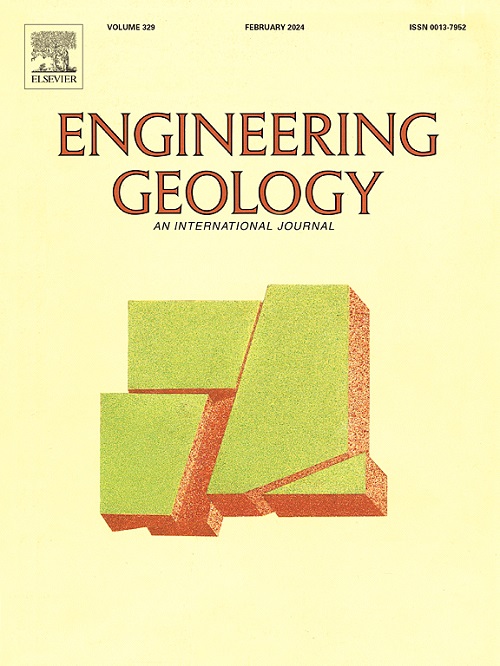Comparative analysis of geological and seismic microtremors models of a large translational landslide: The case of San Vito Romano (Central Italy)
IF 6.9
1区 工程技术
Q1 ENGINEERING, GEOLOGICAL
引用次数: 0
Abstract
This study investigates the San Vito Romano landslide, a significant but poorly documented gravitational phenomenon in central Italy. The local geological setting is characterized by siliciclastic rock units forming a monocline parallel to the slope, dipping 15–20° eastward. For the first time, a detailed geological model of the landslide was developed by integrating extensive geological-technical inventory data with specific geomorphological field mapping. To further analyze the landslide's dynamics and scale, seismic microtremor measurements were conducted and interpreted using the Horizontal-to-Vertical Spectral Ratio (HVSR) method. To streamline the HVSR data analysis, a semi-automatic visualization tool was developed in the R environment and released as open-source. The integrated interpretation of geophysical and geological models revealed a landslide area of approximately 0.5 km2, significantly larger than previously estimated, with a maximum thickness of about 48 m and a total volume of approximately 1 × 107 m3. The primary failure mechanism is identified as a translational rock slide, a common process in sedimentary basins with cuesta morphologies. This research provides the first comprehensive assessment of the San Vito Romano landslide and demonstrates the utility of the HVSR technique in complex geological contexts. It also highlights strategies for integrating geophysical microtremor-based models with geological interpretations, offering insights for future landslide investigations.
求助全文
约1分钟内获得全文
求助全文
来源期刊

Engineering Geology
地学-地球科学综合
CiteScore
13.70
自引率
12.20%
发文量
327
审稿时长
5.6 months
期刊介绍:
Engineering Geology, an international interdisciplinary journal, serves as a bridge between earth sciences and engineering, focusing on geological and geotechnical engineering. It welcomes studies with relevance to engineering, environmental concerns, and safety, catering to engineering geologists with backgrounds in geology or civil/mining engineering. Topics include applied geomorphology, structural geology, geophysics, geochemistry, environmental geology, hydrogeology, land use planning, natural hazards, remote sensing, soil and rock mechanics, and applied geotechnical engineering. The journal provides a platform for research at the intersection of geology and engineering disciplines.
 求助内容:
求助内容: 应助结果提醒方式:
应助结果提醒方式:


